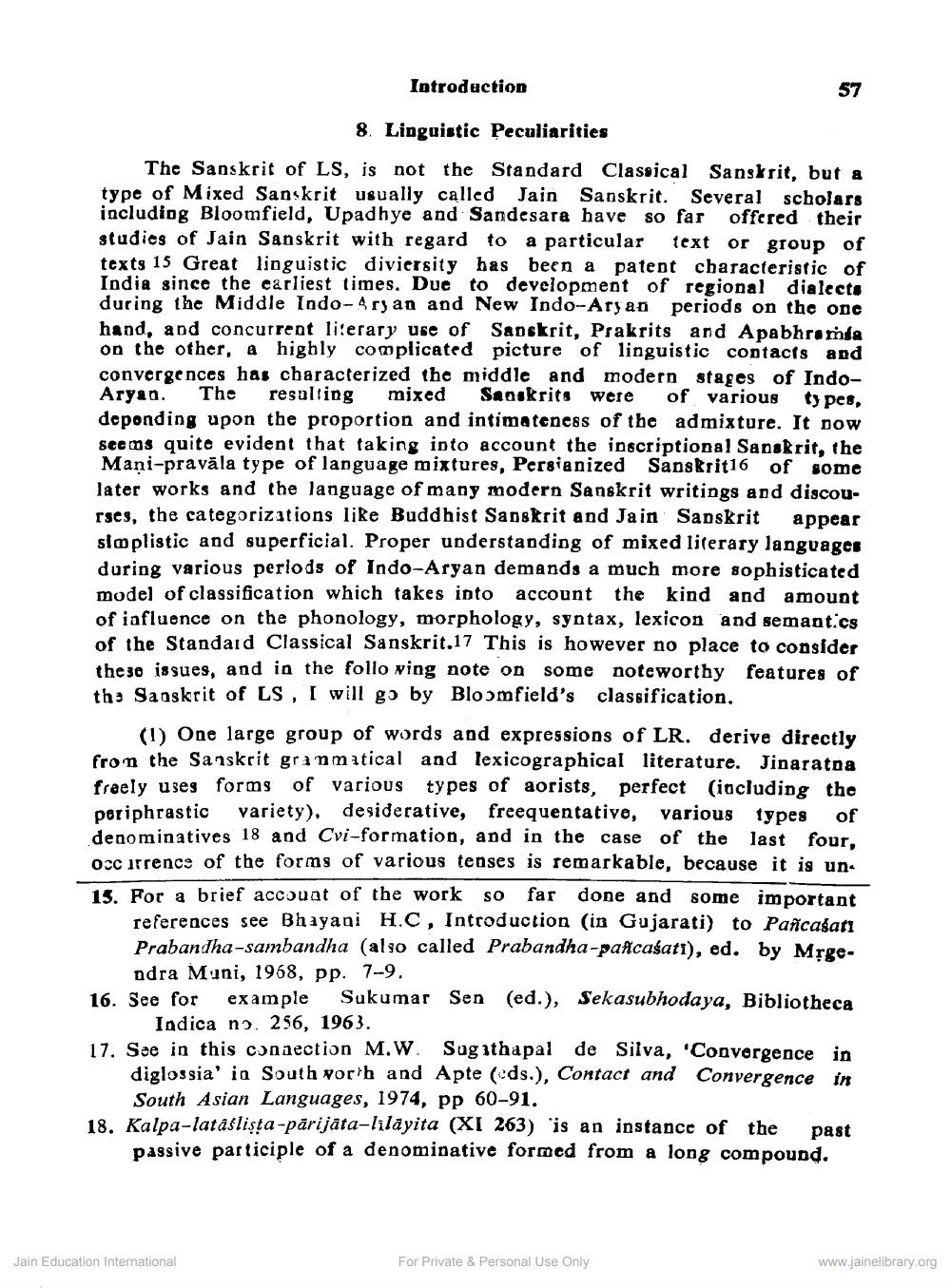________________
Introduction
57
8. Linguistic Peculiarities
The Sanskrit of LS, is not the Standard Classical Sanskrit, but a type of Mixed Sanskrit usually called Jain Sanskrit. Several scholars including Bloomfield, Upadhye and Sandesara have so far offered their studies of Jain Sanskrit with regard to a particular text or group of texts 15 Great linguistic diviersity has been a patept characteristic of India since the earliest times. Due to development of regional dialects during the Middle Indo-Aryan and New Indo-Aryan periods on the one hand, and concurrent li:erary use of Sanskrit, Prakrits and Apabhramda on the other, a highly complicated picture of linguistic contacts and convergences has characterized the middle and modern stages of IndoAryan. The resalting mixed Sanskrits were of various types, deponding upon the proportion and intimateness of the admixture. It now seems quite evident that taking into account the inscriptional Sanskrit, the Mani-pravāla type of language mixtures, Persianized Sanskrit16 of some later works and the language of many modern Sanskrit writings and discourses, the categorizations like Buddhist Sanskrit and Jain Sanskrit appear simplistic and superficial. Proper understanding of mixed literary languages during various periods of Indo-Aryan demands a much more sophisticated model of classification which takes into account the kind and amount of influence on the phonology, morphology, syntax, lexicon and semantics of the Standard Classical Sanskrit.17 This is however no place to consider these issues, and in the following note on some noteworthy features of the Sanskrit of LS, I will go by Bloomfield's classification,
(1) One large group of words and expressions of LR. derive directly from the Sanskrit granmitical and lexicographical literature. Jinaratna freely uses forms of various types of aorists, perfect (including the periphrastic variety), desiderative, freequentativo, various types of denominatives 18 and Cvi-formation, and in the case of the last four, occ irrence of the forms of various tenses is remarkable, because it is un. 15. For a brief accouat of the work so far done and some important
references see Bhayagi H.C, Introduction in Gujarati) to Pancasarı Prabandha-sambandha (also called Prabandha-pancasatı), ed. by Mrge
ndra Muni, 1968, pp. 7-9. 16. See for example Sukumar Sen (ed.), Sekasubhodaya, Bibliotheca
Indica no. 256, 1963. 17. See in this connection M.W. Sug ithapal de Silva, "Convergence in
diglossia' in South worth and Apte (eds.), Contact and Convergence in
South Asian Languages, 1974, pp 60-91. 18. Kalpa-lataslista-pärijāta-lilayita (XI 263) "is an instance of the past
passive participle of a denominative formed from a long compound.
Jain Education International
For Private & Personal Use Only
www.jainelibrary.org




